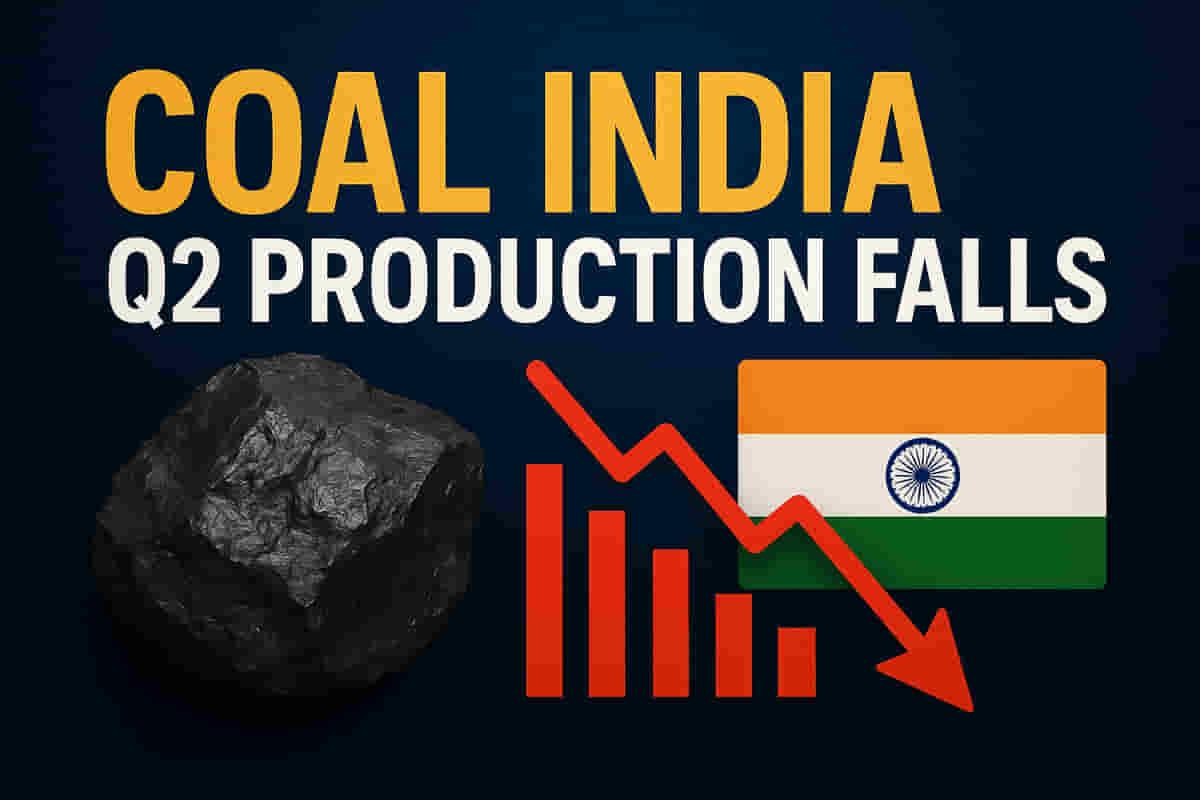Coal India Reports Lower Q2-FY26 Production and Offtake Amidst Future Challenges
Commodities
|
30th October 2025, 11:20 AM

▶
Stocks Mentioned :
Short Description :
Detailed Coverage :
Coal India Limited (CIL) has announced its operational performance for the second quarter of fiscal year 2026 (Q2-FY26), revealing a year-on-year decline in both production and offtake. Production stood at 145 million tonnes (mt), a 4% decrease compared to the previous year, and fell short of the target of 169 mt. Coal offtake recorded 166 mt, down 1% year-on-year, missing its target of 197 mt. The company attributed the weaker offtake partly to reduced peak demand during the quarter and an extended monsoon season. Analysts have slightly revised down EBITDA estimates for FY26, FY27, and FY28 by 1%, 3%, and 3% respectively, reflecting these results.
Impact: The missed production and offtake targets may lead to short-term investor caution. However, Coal India offers an attractive dividend yield of approximately 6%, which could provide some stability. The company's future earnings growth is heavily dependent on its ability to increase sales volumes. Looking ahead, CIL faces significant headwinds. While peak power demand is projected to rise, the increasing capacity of renewable energy (RE) and a greater focus on captive coal blocks could diminish the demand for CIL's coal. Furthermore, anticipated increases in production costs due to a higher stripping ratio and upcoming wage revisions for employees in mid-2026 and early 2027 are expected to raise operational expenses, potentially impacting profitability. Volume ramp-up remains a critical factor for sustained earnings growth. Rating: 7/10
Difficult Terms: Q2-FY26: Second quarter of the fiscal year 2026, typically covering July to September 2025. mt: Million Tonnes, a unit of measurement for bulk commodities. y-o-y: Year-on-year, a comparison of performance between the current period and the same period in the previous year. EBITDA: Earnings Before Interest, Taxes, Depreciation, and Amortization; a measure of operational profitability. Dividend Yield: The annual dividend payout per share divided by the stock's price, expressed as a percentage. Volume Ramp-up: Increasing the quantity or volume of products manufactured or sold. Captive Coal Growth: Coal produced from mines owned and operated by a company for its own use, not for sale. Thermal PLFs: Plant Load Factors for thermal power plants, indicating their capacity utilization rate. RE Capacity: Renewable Energy Capacity, referring to the total installed power generation capacity from renewable sources like solar and wind. Stripping Ratio: The ratio of waste material removed to the amount of coal or ore extracted in mining operations; a higher ratio increases costs. Wage Revision: The periodic process of adjusting employee salaries and wages.